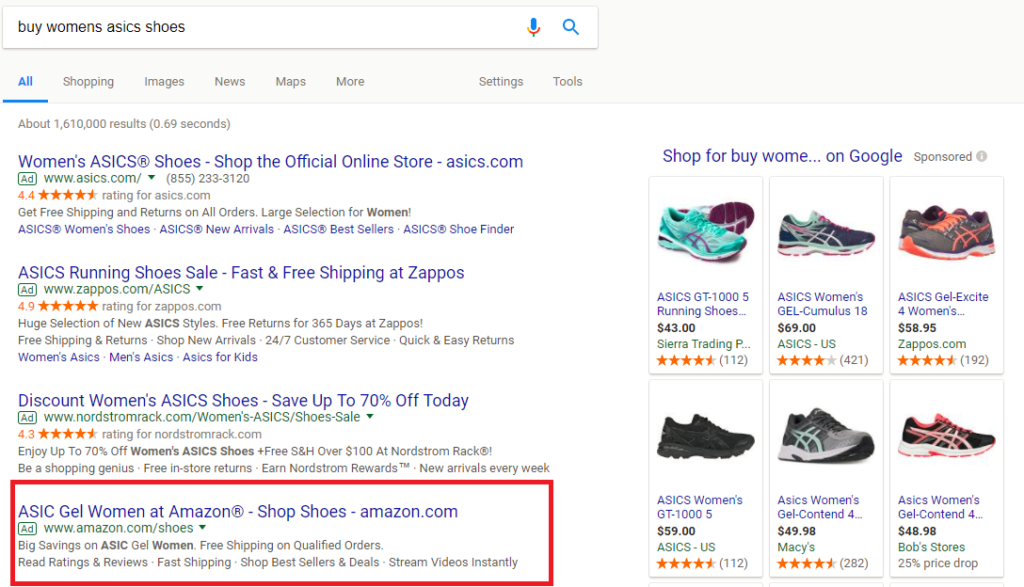The retail revolution, part 4: how to incorporate amazon into your digital strategy

So far in this series, we’ve covered the new retail landscape, how to tie offline conversions to online behavior, and how to adjust your digital strategy for the new norms of online/offline convergence. Now it’s time to tackle the behemoth in Seattle.
In 2018, there’s no escaping Amazon if you’re in online retail. Whether you’re selling your products on Amazon or not, your strategy is affected by the ever-growing behemoth. In this post, we’ll talk about how Amazon fits into your overall digital strategy – and considerations you need to make along the way.

The growth of Amazon in the digital marketing space is well known at this point. AMS (Amazon Marketing Services – here’s a guide to best practices) is one of the more popular channels in the ecommerce space, and brands are recognizing the scale and efficiency it can provide. What can go overlooked, however, are all the implications Amazon’s growth has on the rest of your marketing program, beyond buying directly through Amazon. There are various considerations for marketers to make with their initiatives, and we’ll dive into a few here.
Amazon’s growing presence in the paid search space on each major engine is hard to deny. For just about every product category, Amazon is heavily investing in paid search ads for products sold on its site, and their impression share is increasing.

There are several implications here, the most obvious being that CPCs are rising with the added competition. Unfortunately there are no easy solutions here; your best bet is to make sure all best practices and standard efforts to decrease CPCs are in place: strong account structure that yields high CTR and QS, ad copy testing for CTR gains, optimizing landing pages, etc. Though these efforts can help keep your CPCs at bay, the force that is Amazon likely is not going away, so you’ll want to factor elevated CPCs into your forecasts.
In addition to Amazon’s growing presence on the SERP, user search and purchase behavior is changing. With users becoming more comfortable searching for, browsing, and purchasing products of all types on Amazon, they are spending more time there and less time on Google. We are seeing in cases that click-through rates are being impacted by Amazon’s presence – particularly on branded terms – where users are becoming more inclined to click directly to Amazon to find greater product options, low prices, and, thanks to Amazon Prime, free two-day shipping. Not to mention, they can fill their cart with products across a spectrum of brands and product categories – much easier than buying three things from three different brand websites. My own personal online shopping behavior mimics this.
This trend is exacerbated during holiday and promotional times, when customers are actively looking to purchase discounted products, again often across multiple categories/brands. In certain cases recently we have seen decreases in brand search revenue over these time periods (such as Black Friday / Cyber Monday), driven entirely by click-through rate decreases as users are clicking through to Amazon instead. (One client who saw impressions increase by over 20% YoY saw 20% fewer clicks and a similar dip in revenue from Google branded traffic.)
If you are selling your products on Amazon, there is a chance the users are just buying your products there. This is generally still a positive outcome, but unfortunately tracking largely falls off when users purchase through Amazon. And given the growth trajectory of Amazon and Prime membership, there is no reason to expect this dynamic to lessen any time soon. So how should brands address this problem?
- To start, if you are selling your products on Amazon, it is important to measure your digital channels holistically, rather than in silos. Considering the amount of revenue paid search, organic search, and Amazon itself are all combining to bring in over time, for example, will paint a more accurate picture of the revenue moving from Google to Amazon, and will help illuminate the real impact Amazon is having on your overall program. In the example above,we saw brand search revenue decrease and revenue from purchases on Amazon increase a similar amount, indicating that in that instance the net impact might have been minimal. (Net profit might be a different story for the brand, of course.) Regardless of the impact Amazon might be having on branded CTRs and revenue, I would not advocate decreasing brand search bids, since brand search is still going to be your most efficient marketing channel. But i is important to recognize that revenue numbers in your most efficient channel might be impacted by Amazon, and this in turn will impact your overall search program.
- Consider ways to incentivize users to come to your site rather than Amazon. You will be able to track users coming to your site, giving greater visibility into your marketing programs. You’ll be able control the messaging they see on site, add them to remarketing audiences, and ensure they can only buy your product and not a competitor’s. Most brands can’t win a pricing game with Amazon, so consider more unique offers to attract customers.
- If you can’t beat ‘em, join ‘em. This recommendation stands alone, regardless of the impact Amazon might be having on your search program. The Amazon marketplace is vast and offers brands a great opportunity to expand their reach and to get incremental sales. Load your optimized product catalog into Amazon to take advantage.
These are just a few of the challenges Amazon is starting to pose to search marketers as they continue to grow. New challenges will certainly emerge as the landscape changes. Already Amazon is discussing plans to bring advertising to Alexa, which enables customers to bypass Google and search altogether to purchase. Customer journey tracking – or lack thereof – when users enter the Amazon environment is another challenge that undoubtedly will be addressed in the near future. Ultimately, embracing Amazon as it continues to grow and evolve, much as brands have come to embrace Google, might be the best opportunity to protect your brand today and to truly take advantage of all the benefits the digital giant will eventually bring to advertisers.




